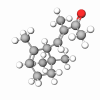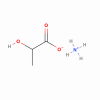Canola oil is derived from Rapeseed (Brassica napus). The name of oil initially was “Rape Oil,” but for marketing purposes, it was renamed using an abbreviation from “Canadian Oil Low Acid” - (Can.O.L.A.).
Rapeseed oil is edible cooking oil that can be used in raw or natural form in skincare formulations like creams, pomades, and moisturizers. It may be a part of the daily regimen for its anti-toxin properties, helping to clear unwanted toxins from the skin. Brassica napus assist in cleansing the skin internally and externally. Many people also use canola oil in topical applications on the skin.
Canola oil is a plant-derived lipid that is a natural moisturizing factor. It also has barrier-repair and anti-inflammatory properties. In addition, it is suggested from a clinical study that naturally high levels of sterols might give rapeseed oil the ability to soothe skin that is irritated by surfactants.
Its constituent fatty acids are primarily oleic and linoleic. Much of the known benefits of canola oil can be attributed to high levels of monounsaturated, which is considered a healthy fat, containing as much as 7% of the total saturated fats (which is the ideal requirement) and polyunsaturated fatty acids. These unsaturated fatty acids reduce the risk of heart and cardiovascular diseases.Canola oil is an excellent source of omega-6 fatty acids, linoleic acid and has a rich source of omega-3 essential fatty acid, alpha-linolenic acid (ALA). These particular fats are crucial as the human body cannot produce them. Omega-3 essential fatty acids are beneficial for skin care and overall health. There are also adequate amounts of vitamin E contained in canola oil.
Due to the higher percentage of the monounsaturated fats present in Brassica napus oil, it is a highly rated oil than its counterparts like safflower oil, corn oil, and sunflower oil.











